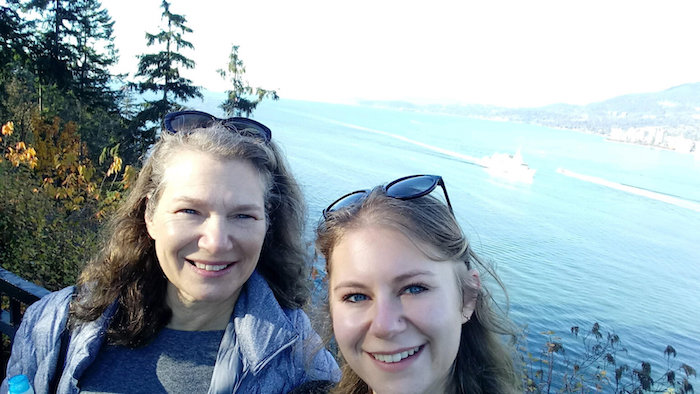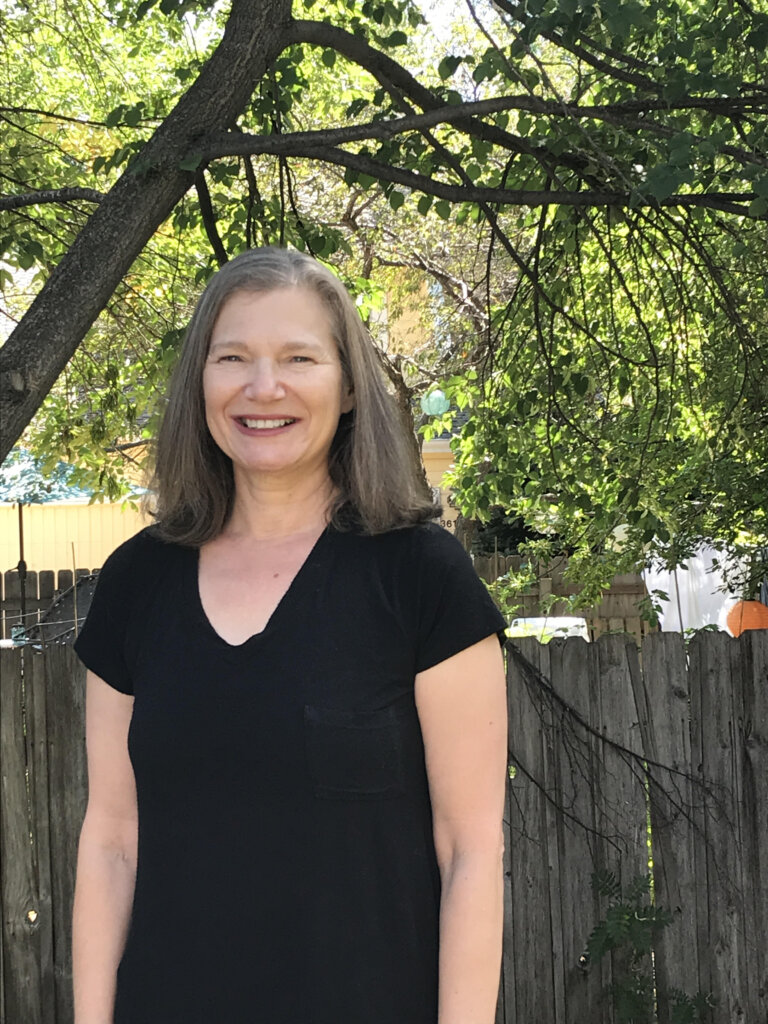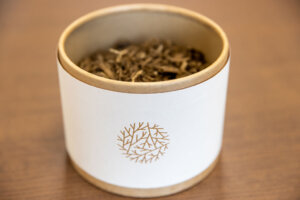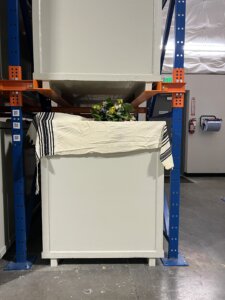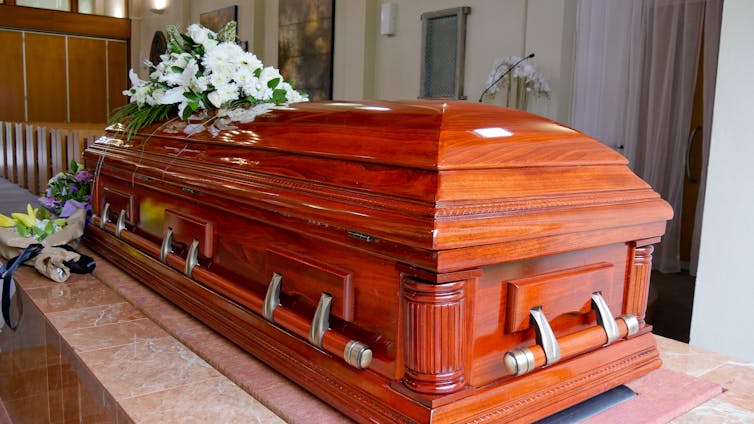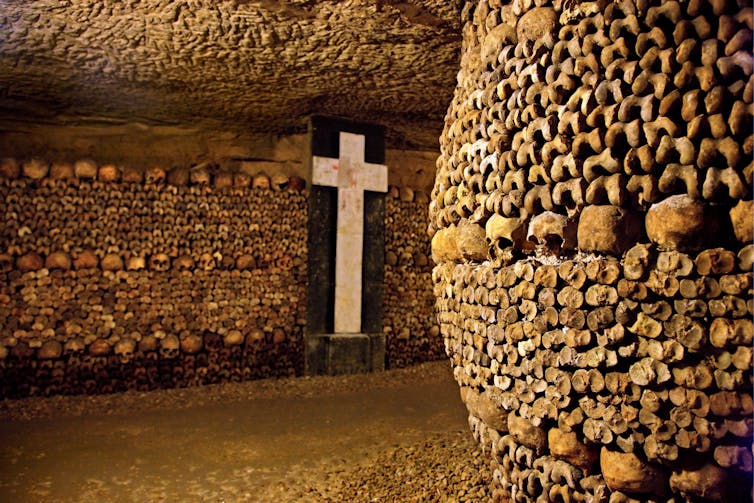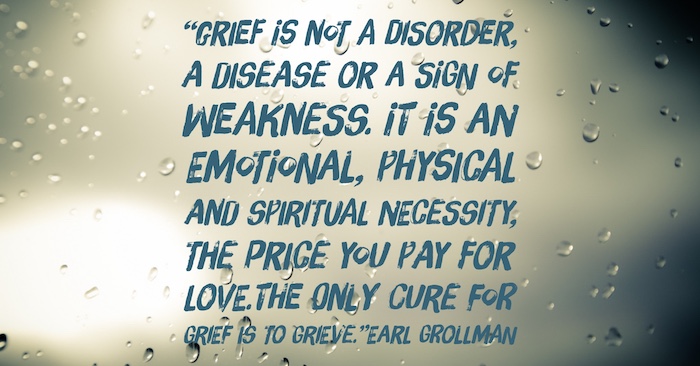— Some Are Greener Than Others

Innovation and interest in green burial practices are growing fast in the U.S. fed by concerns about the environmental impact of modern burial and cremation. 60.5% of Americans are interested in eco-friendly burial choices according to the National Funeral Directors Association. Yet most people know little about their green burial options.
-
Green burial is a way to care for the dead without damaging the earth.
-
Perhaps the greenest option is a simple, natural burial.
-
Other green options include human body composting, tree pod burial, biodegradable urns, water cremation, Tibetan sky burial, and sea burial.
-
Not all countries or states allow each option. Knowing your choices empowers you to choose a deathcare practice that matches your personal values.
What is green burial?
According to the Green Burial Council (GBC), green burials care for the dead by restoring and conserving natural resources and habitats, reducing carbon emissions, and protecting mortuary workers from embalming toxins.
As more Americans notice problems with the funeral industry, many are jumping on the green burial movement’s bandwagon.
In lacquered caskets and cement vaults, we currently bury our dead using an estimated 1.6 million tons of concrete, over 64,500 tons of steel, and four million gallons of toxic embalming fluid every year.
Meanwhile, fire cremation uses about 30 gallons of fuel to cremate one body – a deep carbon footprint.
In urban areas, cemeteries occupy precious space while urban dwellers and city planners need land for new housing.
These practices injure the earth and separate us from nature as if dead bodies poison the ground. Green burial advocates say death nourishes the earth with the right deathcare practices.
Green cemeteries certified by the GBC do not allow toxic embalming, vaults, non-biodegradable products, herbicides, pesticides, or fertilizers. They encourage sustainable management practices, land conservation sites, and creative and natural ways to mark graves.
Some green burial options are greener than others. Know your choices before you plan your final legacy.
Natural burial: let earth do the work
Perhaps the greenest option is a simple natural burial, a return to the way many of our ancestors were buried.
Natural burial uses only biodegradable products to bury the deceased. Families choose simple shrouds and earth-friendly caskets. You can even be buried without a casket and wrapped only in the shroud.
No cement or plastic vaults are installed into the ground for natural burials. Without vaults, holes for the deceased are shallower, about 3-4 feet deep, disrupting less soil.
Natural burial lets the earth do its genius work transforming the human body into rich, healthy soil to nourish the ground, which feeds plants and animals. A green burial saves the earth from toxins and replenishes healthy, organism-rich soil through organic decomposition.
Modern American embalming started when the bodies of Civil War soldiers were returned to their loved ones far from the battlefield. Caretakers preserved the bodies so loved ones could see them one last time.
Today, morticians embalm bodies primarily for funeral viewings, a fading practice in America. Without viewings, preserving the body is rarely needed.
For those who do want a funeral viewing, however, there are green alternatives. Bodies can be kept cold at a funeral home for days to months while waiting for a funeral. Green embalming fluids are another option. The GBC certifies four green and effective products to preserve loved ones.
If you can bury the body within 48 hours, you can usually hold a viewing without refrigeration or preservation. Some families today cleanse and prepare the bodies of their loved ones and keep them in the home for viewing and last visits from friends and family.
Today’s median cost of burials with viewing ceremonies is $7848, not including cement vaults and headstones. Green burial costs an average of $2000-$3000. Some states allow natural burials in places other than cemeteries, often lowering the cost even further.
You can also donate your body to forensic science and education. Scientists bury your body naturally in “body farms” and study the decay. For body donation, you don’t have to pay burial costs, but you may need to pay transportation costs todeliver the body.
Burial laws differ from state to state. To customize your burial as much as possible, read your state’s laws and find a local funeral home offering natural burial.
Body compost: a faster decomposition
Natural Organic Reduction (NOR), also called human composting is a new and innovative death care option. Like natural burial, it transforms the human body into rich, living soil but at a much faster rate of 30-45 days.
Washington state was the first state to legalize human body composting. Since then, Colorado, California, Vermont, and Oregon also legalized it.
The NOR process begins by wrapping the body in a biodegradable cloth and cradling it into a vessel, usually made of steel. Under and over the body is a blanket and bed of organic matter like alfalfa, wood chips, straw, and wildflowers.
For about 30-45 days, funeral staff tend to the body and vessel. During the process, the temperature inside the container reaches about 140°, creating the prime environment for microbes to transform the body into soil.
When the flesh is decomposed, bones and teeth remain. They are ground – just like cremation – and returned to the soil.
Medical devices, metal fillings, and implants also remain. Funeral staff carefully separate these items and often recycle them.
Loved ones can take home some or all of the composted soil to spread as a memorial in gardens or around trees. Some people choose to donate the soil to local land restoration projects.
The cost of composting your body is comparable to current burial costs. It can range from $3500 to $8000 depending on the company and the services rendered.
Manufacturing, distribution, and building is still required to develop composting sites. NOR doesn’t completely reduce your carbon footprint, but it’s better than current burial and cremation practices. It feeds the earth while leaving a lasting green legacy.
Tree pod burial: become a tree
In 2016, a fascinating new idea hit the deathcare industry. Two Italian designers, Adriano Del Ferro and Francesco D’Angelo, unveiled their dream of burying bodies under a tree seedling. They call the concept Capsula Mundi, a cocoon tree pod burial.
In a meaningful design reminiscent of new birth, the body is wrapped in a natural fiber shroud and placed into an egg-shaped capsule. The womb-like vessel is lowered into the ground, and a tree is planted directly over it.
As the body decays and transforms into healthy soil, it nourishes the tree. Some consider the process a physical transformation into the tree – a rebirth in the cycle of life.
The concept is still developing, but the vision is to plant the cocoons in restoration and conservation areas. Rather than visiting a tombstone, loved ones can visit the tree using GPS coordinates of the burial site.
Green critics say burial in a tree pod disturbs more earth by requiring deeper holes. In addition, even though the pod is biodegradable, manufacturing, storing, and shipping the pods increase the carbon footprint.
With such a new idea, cocoon tree pod burial cost is unknown. Del Ferro and D’Angelo estimate it will be cheaper than a traditional burial in the United States.
Biodegradable urns: ashes to trees
While we wait for tree pods to hit the market, companies offer biodegradable urns as another novel option.
Innovators designed the urns to memorialize ashes in an eco-friendly way. Scattering or burying cremated remains isn’t great for the earth. While the ashes aren’t highly toxic, they have a high pH level. This increases the alkalinity of nearby soil. Cremated remains are also high in sodium levels.
To plant the urn, the ashes are placed first in the bottom. An additive to balance pH is placed on top of the ashes. Next, the roots of a young tree are set into the urn and surrounded with planting soil. The urn is planted directly into the ground, where a living memorial grows for loved ones to visit.
Always check your state’s rules on burying cremated remains before choosing your planting site. Prices of living urns with trees vary from $100-$370.
Water cremation: a tenth of the carbon footprint
Water cremation isn’t as new as you might think. Some universities in the U.S. have used the process with donated bodies since the mid-90s. The Mayo Clinic has used the process since 2006.
Water cremation advocates say it leaves only a tenth of the carbon footprint compared to fire cremation. The body gently decomposes with water and a small amount of potassium hydroxide. Scientifically known as alkaline hydrolysis, the process takes around 16 hours.
The body is first placed into a large stainless-steel cylinder. The water solution then passes around the body at a near-boiling temperature. Some systems process the body quicker using higher temperatures up to 300 degrees Fahrenheit.
Soon the body is dissolved and transformed into a liquid of amino acids, salts, peptides, sugars, and soap. Like flame cremation and human composting, the bones are ground into a fine powder and returned as “ashes” to loved ones.
Surprisingly, the liquid is so clean and altered that the solution can safely drain into the sewer system. Alkaline hydrolysis breaks down environmental pollutants in the body like drugs and embalming fluid. Waste managers say the process even improves their systems because the liquid feeds the bacteria that decompose sewage.
Water cremation uses much less energy than fire cremation. It runs on electricity instead of fossil fuels and releases no greenhouse gases, unlike open air fire cremation which is allowed only in Colorado state as of 2022.
However, alkaline hydrolysis isn’t purely green. 80 gallons of water are used to process one body. Manufacturing, storing, and distributing the machines also leaves a carbon footprint.
In the U.S., more than 20 states allow alkaline hydrolysis as a burial option, and more than 80 machines will be in operation by the end of 2022. The cost typically starts around $2000.
Mushroom suit: not as great as it seems
In 2011, artist Jae Rhim Lee presented an alluring idea to a fascinated TED audience: a burial suit woven with fungi to hasten the decomposition process. She argued natural burial doesn’t thoroughly break down normal human toxins.
Despite the great idea, her science was unfounded. Nature’s process is brilliant at transforming the many toxins hidden in the human body before they leach into the earth.
Naturally, the body’s own bacteria are the first organisms to start decomposition. Fungi from the earth join the process later. Adding them to a burial shroud doesn’t necessarily speed up the process.
Currently, production of the $1500 mushroom suit has stopped, and whether it will start again is unknown.
Sea burial: possibly eco-friendly
Sea burial is still practiced around the globe. In 2020, 2544 sea burials were permitted by the Environmental Protection Agency, the sole regulator of burial at sea. However, whether sea burials are eco-friendly isn’t a highly discussed topic.
The EPA allows only biodegradable items to be used, except metal to ensure the body sinks adequately. They recommend a metal chain connected to a body or a metal casket drilled with holes for rapid sinking.
Casting metal into the sea isn’t the only questionable issue. The EPA requires bodies to be buried at least three nautical miles offshore and in waters up to 1800 feet deep for certain locations. For some, this requires a fair amount of fossil fuel to travel to an authorized site.
As for scattering cremated remains, according to the EPA, you can spread them on a non-windy day or use a biodegradable, sea-friendly urn. There is no sea depth requirement for scattering cremated remains. Still, the scattering must also take place three nautical miles offshore.
If burial at sea holds deep meaning for you and you seek earth-friendly burial options, a green sea burial is possible with a little creativity and research.
Tibetan sky burial: let the animals feast
Tibetan sky burials are not permitted in the U.S. even though they’re largely gentle to the earth.
Sky burials are practiced by Tibetan Buddhists to connect the body back to one of the four elements: Air. The bodies are laid in the open air for vultures and other animals to consume.
Traditional Tibetans believe a dead body is an empty vessel best used to nourish animals. The Tibetans call the ritual ‘jhator’, but it can also be called a bird burial or celestial burial.
Final thoughts
Green burial options are scientifically fascinating, but they’re not always as green as you may think. Still, they’re a great way to customize your burial to your beliefs, ethics, and spirituality. Personalizing your death care plans increases your peace with dying.
To leave a green legacy, first decide what provides meaning to your life now. Combine those meaningful values with your environmental concerns and apply them to your death plans. Find products and resources to match your ethics and check your state’s burial laws.
Once you’ve made your death care plans, update your advance directives and inform your loved ones and health proxy.
Complete Article ↪HERE↩!


